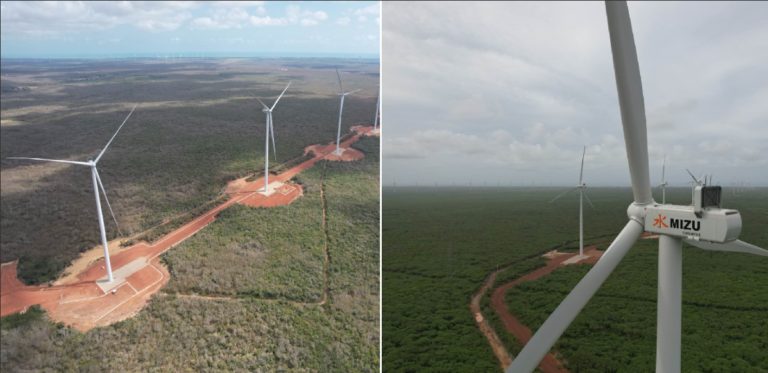Month: June 2024
June 5th is Environment Day, an opportunity to reflect on our commitment to the planet and the measures we are taking to protect and preserve its beauty and biodiversity. The cement industry plays a crucial role in this scenario, with important initiatives capable of transforming this sector into a driver of sustainability.
According to data from Poli-USP, the annual demand for cement in the world is around 3.5 billion tons, and that, by 2050, this demand could be 2.5 times greater due to emerging countries. This means that small initiatives in this sector are capable of generating large impacts towards building a more sustainable future.
Among the various initiatives used to reduce carbon dioxide emissions per ton of cement produced (kgCO2/tCement), those related to the consumption of electrical energy from renewable sources stand out – a characteristic that gives Brazil a leading role on the global stage, compared to use of wind energy, solar energy and hydroelectric plants.
In this scenario, the Polimix Organization stands out for understanding sustainability as an essential tool for the development of its business. There are more than 40 solar plants, 01 wind farm and 03 small hydroelectric plants, producing green energy. At Mizu Cimentos, the electrical energy for the entire production process is 100% renewable. This transition to more sustainable energy sources not only benefits the environment, but also strengthens the sector’s long-term resilience and competitiveness.
Mizu Cimentos conducts all phases of its production process, focusing on the environmental variable as an integral part of its business philosophy. In addition to environmentally appropriate disposal of its own waste, Mizu Cimentos co-processes industrial waste, biomass and unusable tires, in the form of alternative fuels, to replace fossil fuels in its clinker kilns. This allows for the production of even more environmentally friendly cements by producing clinker with lower CO2 emissions. In this way, sustainability is not just a secondary concern, but a fundamental guiding principle that drives innovation and excellence at all stages of cement production.

Another initiative that has scaled up great opportunities, focuses on the addition of alternative inputs to the cement composition, namely: limestone filler, steel slag, fly ash and pozzolans. The additions of these alternative inputs are standardized by ABNT and NBR, allowing the partial replacement of Portland clinker without reducing its physical-mechanical performance.
The production of low-carbon Portland cement represents a significant advance in the cement industry towards environmental sustainability. In the case of cement production with slag additions (CPIII), this substitution results in a substantial reduction in CO2 emissions during cement production. In addition to mitigating environmental impact, CPIII maintains the quality and performance of concrete, providing greater durability and resistance to chemically aggressive environments (sulfate resistance). The production of CPIII reflects the cement industry’s growing commitment to more sustainable practices, contributing to a greener and more responsible future.

In this way, the use of additions in clinker production not only contributes to the mitigation of CO2 emissions, but also promotes the sustainability and quality of the cement. This approach is in line with the objectives established by the Paris Agreement and the guidelines of the International Energy Agency (IEA), highlighting the cement industry’s commitment to more environmentally responsible and sustainable practices.
As we celebrate Environment Day, let us also celebrate these advances and take inspiration from them to continue working towards a future where the cement industry not only co-exists with the environment, but also actively contributes to its regeneration and prosperity. Together, we can build a greener and more sustainable world for future generations.


